Vientiane to Kunming by Train
This is a review of the international Laos-China train between Vientiane Station in Laos and Kunmingnan in China. It includes a review of 1st Class and the border procedures. The top speed of this train was 165 km/hour. You cannot class it as high speed but it was a smooth and quiet ride. I was impressed. This is part of my Singapore to Beijing train trip.
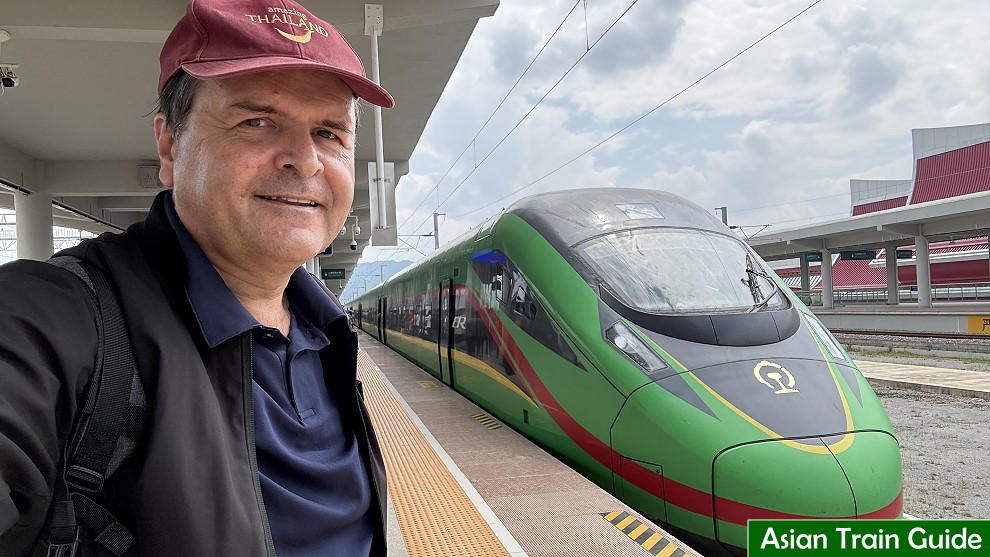
🇱🇦 🇨🇳 TRAIN 9: Vientiane in Laos to Kunming in China
🚂 D88
🗓️ Date of Travel: 11th October 2024
⏰ Departure: 08:08 | Arrival: 18:34 (China time)
⏱️ Duration: 9 hours and 26 minutes (includes Immigration x 2)
📏 Distance: 994.7 km (map of route)
🎟️ Ticket: 2,592,000 kip (1st Class)
QUICK LINKS: TRAIN 1 | TRAIN 2 | TRAIN 3 | TRAIN 4 | TRAIN 5 | TRAIN 6 | TRAIN 7 | TRAIN 8 | TRAIN 9 | TRAIN 10

This is my third time on the Laos-China Railway, but it’s the first time I crossed the border into China. I booked my tickets two weeks in advance using the LCR Ticket app. If you have a phone number in Laos, China, or Thailand, you can register to use the app. For domestic trips, tickets can be booked three days in advance, but for international trips into China, you can book up to two weeks ahead. Tickets go on sale at 6:30 a.m. Thai time (Chinese time is one hour ahead of Thai and Laos time).
When planning your trip, be aware of long holidays in China, as trains can sell out quickly. I was lucky that for my trip, the holiday rush was over, and my train wasn’t full. For international trips, you must print your ticket if purchased via the app. This can be done for free at the ticket office at Vientiane LCR Station, so ensure you arrive early in case of long queues. There are also two ATMs near the ticket office if you need cash.
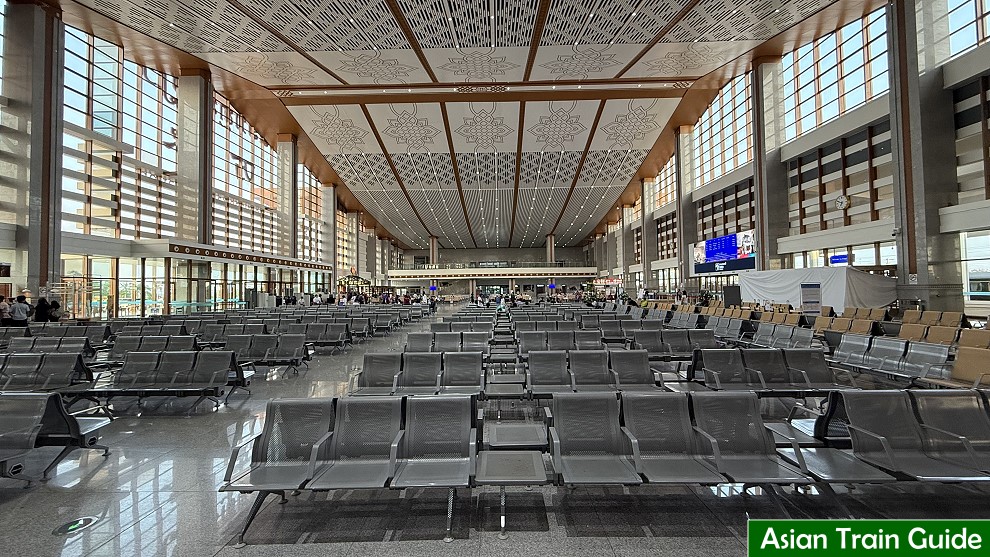
Vientiane LCR Station operates as a “closed system,” meaning you cannot enter without a valid ticket. After checking your ticket and passport, you pass through security, where your bags are x-rayed. The waiting hall is spacious with plenty of seating, and Business Class passengers have a separate waiting area.
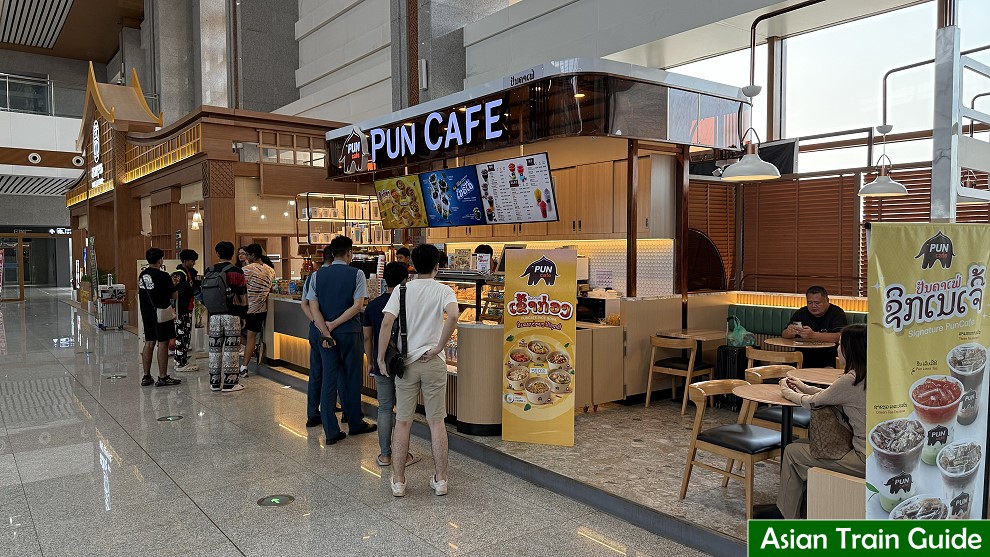
The station has a few shops selling snacks and drinks. Thais will recognise Cafe Amazon. I bought an iced coffee and a sandwich. Some shops sell pot noodles, and free hot water is available in the station and on the train. It’s cheaper to buy food at the station than on the train, so I stocked up on emergency pot noodles and coffee.
I caught train D88, scheduled to depart at 8:08 a.m., with boarding allowed 25 minutes prior. The queues to the platform are long but move quickly. Once your QR code is scanned, you can board the train.

I travelled 1st Class in Coach 8, located at the front of the train. In Laos, taking photos in front of the driver’s cab is not allowed, but in China, no one seemed to mind, so I took a few photos of the front of the train.
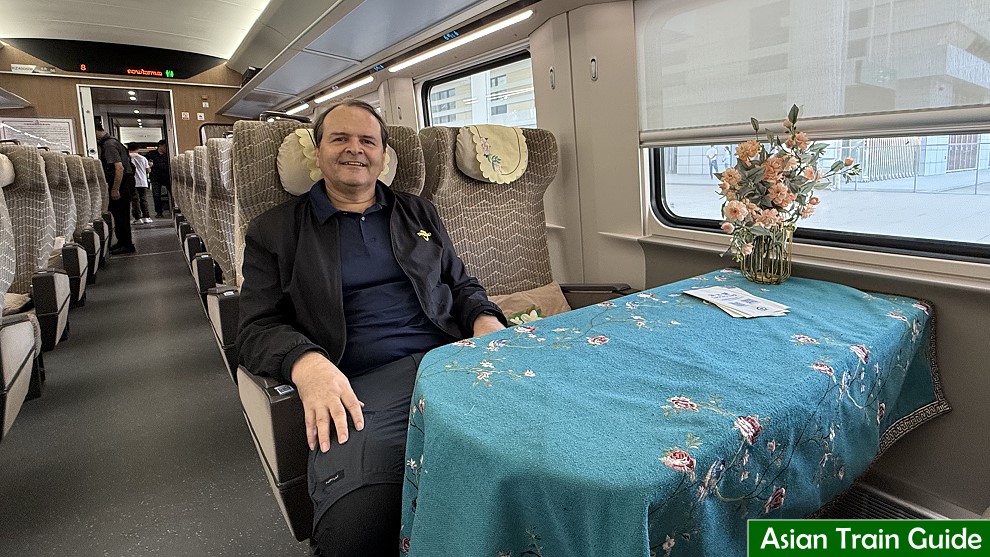
My assigned seat was 10A, a backward-facing window seat, but as the carriage wasn’t full, I switched to seat 7A, which faced forward and had a table in front. First-class seats are arranged 2 + 2, wide, well-padded, and equipped with adjustable headrests, power sockets, a USB port, and coat hooks. Window blinds help with bright sunlight, and there’s storage space for personal items.
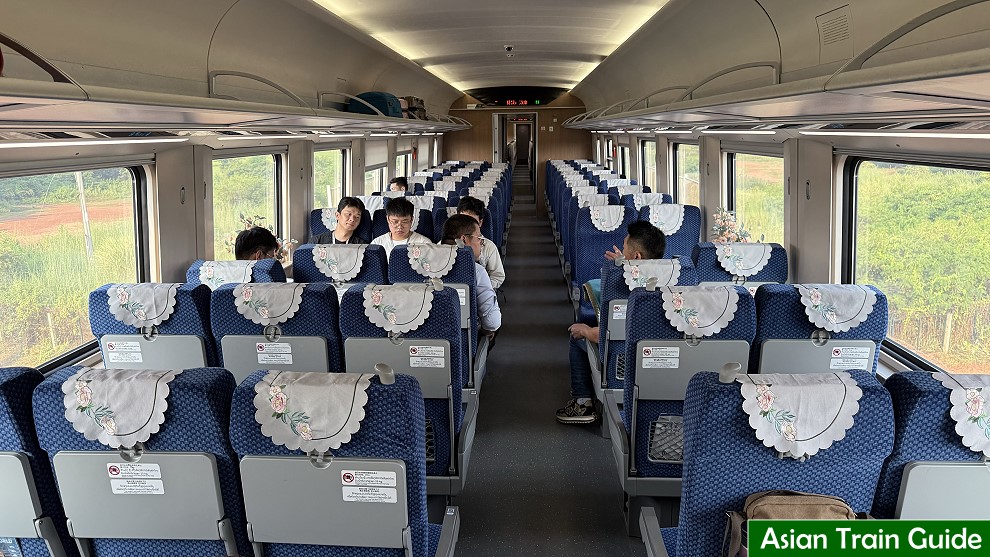
Second-class carriages are arranged 3 + 2 with blue seats. The seats looked comfortable enough, but I wouldn’t want to be in the middle seat on a long ride. Like in first class, they have a fold-down table and plug sockets under the seat.
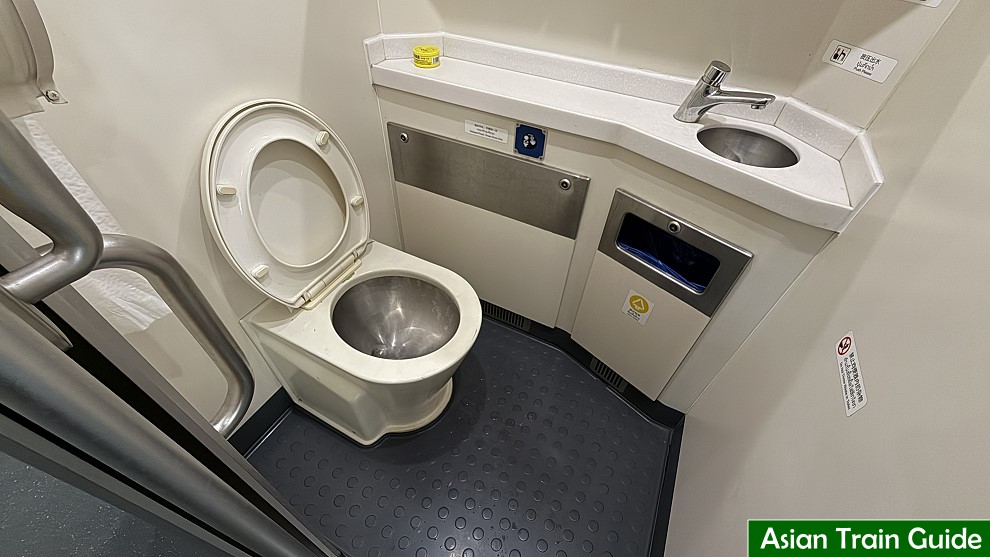
The toilets were kept clean throughout the journey, offering both squat and Western-style options, with toilet paper and soap provided. One of the perks of Chinese trains is the availability of free hot water at the end of each carriage. I brought a collapsible cup to make my own coffee. Although there’s a cafe onboard offering microwaved meals, they’re quite expensive.
Crossing the Laos-China Border
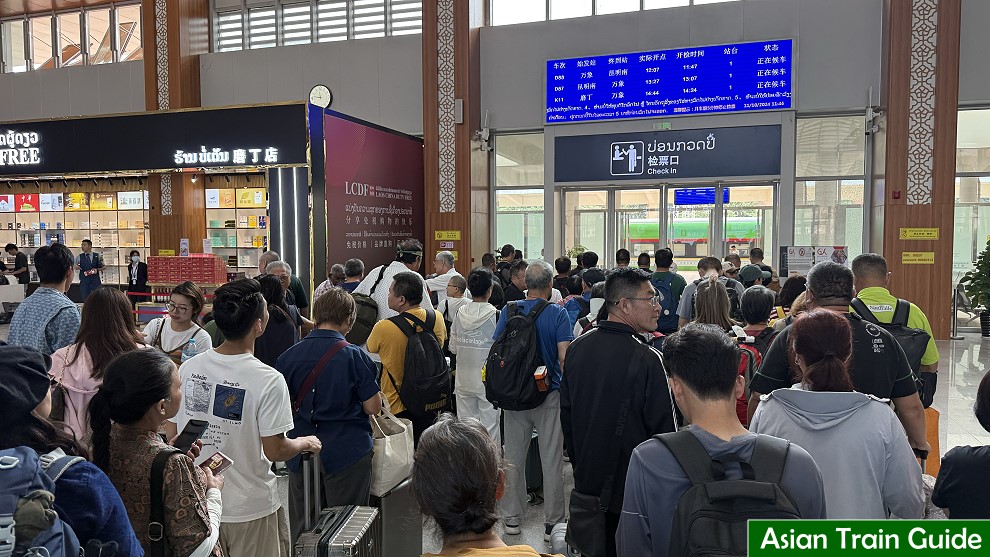
We arrived at Boten Station on the Laos side of the border at 11:15 a.m. My watch automatically moved forward by one hour to match Chinese time. After disembarking with our luggage, we went through security, Laos immigration, and customs. They checked to ensure passengers had a valid visa for China. While waiting in the duty-free area, I bought some snacks using Alipay, which I had set up in Thailand with my Thai phone number. It worked seamlessly, linked to my Wise Visa card. We re-boarded the train at 12:07 p.m.
Chinese Immigration at Mohan Station
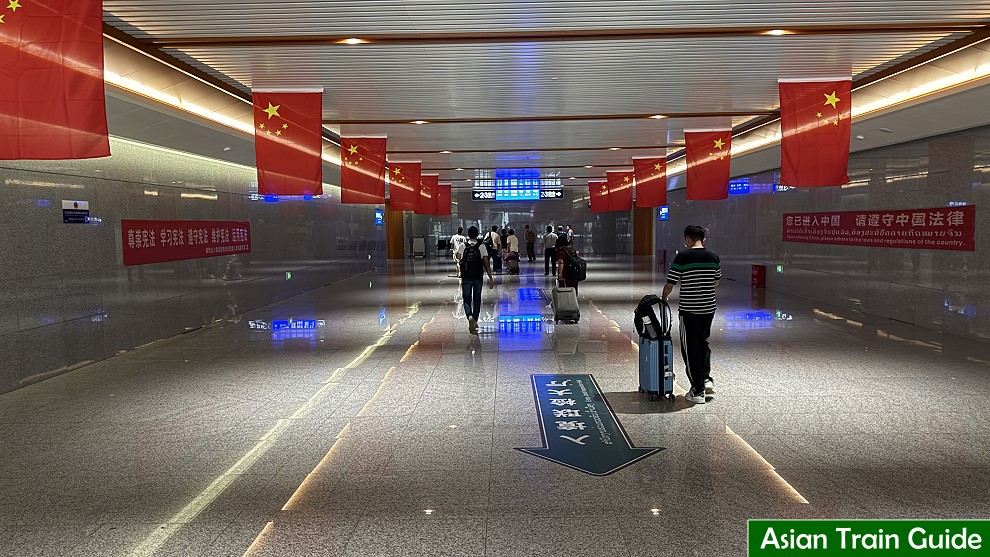
Mohan Station, on the Chinese side, was only 12 minutes away. We arrived at 1:19 p.m. and stayed for 52 minutes. After a health check, security screening, and Chinese immigration, we waited outside to re-board. Smoking is common in China, though strictly prohibited on the train.
We departed on time at 2:11 p.m., and from this point onward, the internet connection improved. I used a Nomad e-SIM, which allowed me to cross borders without needing a local SIM.
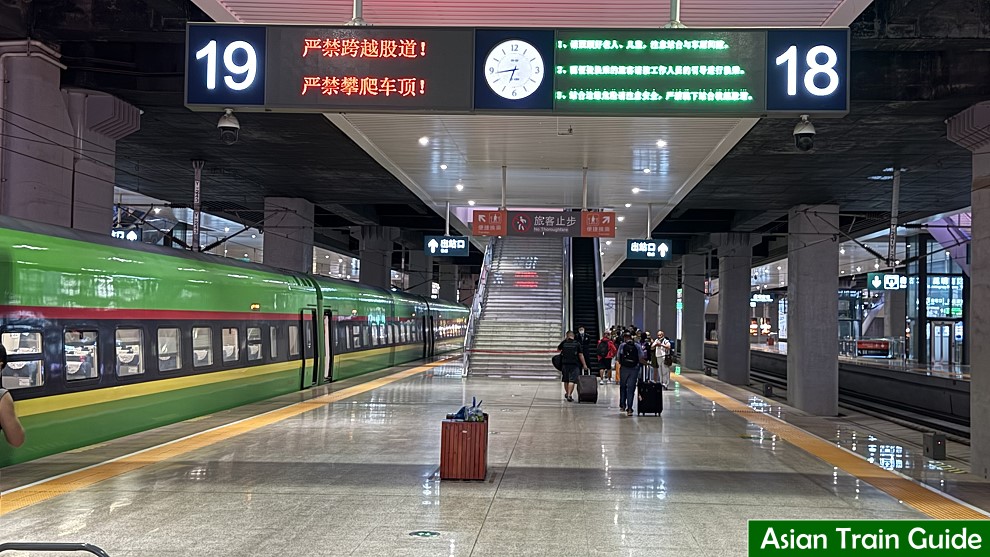
We arrived at Kunming South Railway Station at 6:34 p.m. The station is huge, and we disembarked at Platform 19. I followed signs to the subway, which is an easy and affordable way to get around Kunming. You don’t need a ticket for the subway—just open Alipay, click on transportation, add a card for the subway, and scan the QR code when entering and exiting.
➡️ BUYING TICKETS:
🇹🇭 Thailand: DTicket
🇲🇾 Malaysia: KTMB
🇨🇳 China: Trip Dot Com
➡️ TRANSPORTATION TICKETS IN ASIA:
✅ 12GO Asia
✅ Trip Dot Com
✅ Baolau
QUICK LINKS: TRAIN 1 | TRAIN 2 | TRAIN 3 | TRAIN 4 | TRAIN 5 | TRAIN 6 | TRAIN 7 | TRAIN 8 | TRAIN 9 | TRAIN 10
